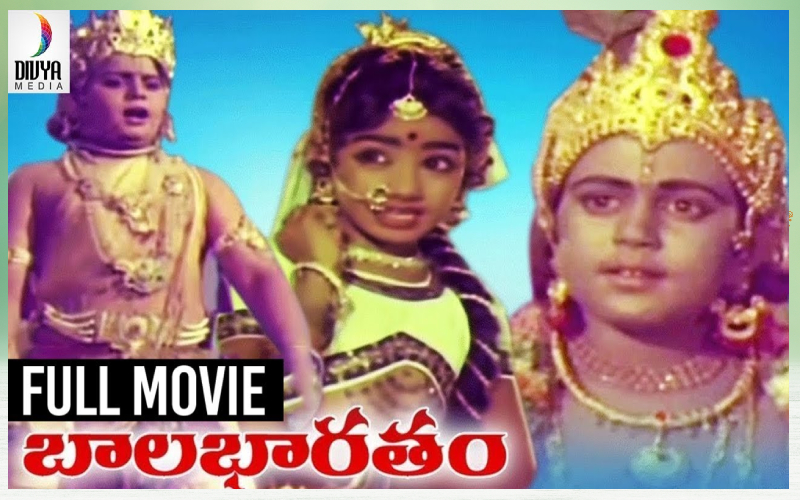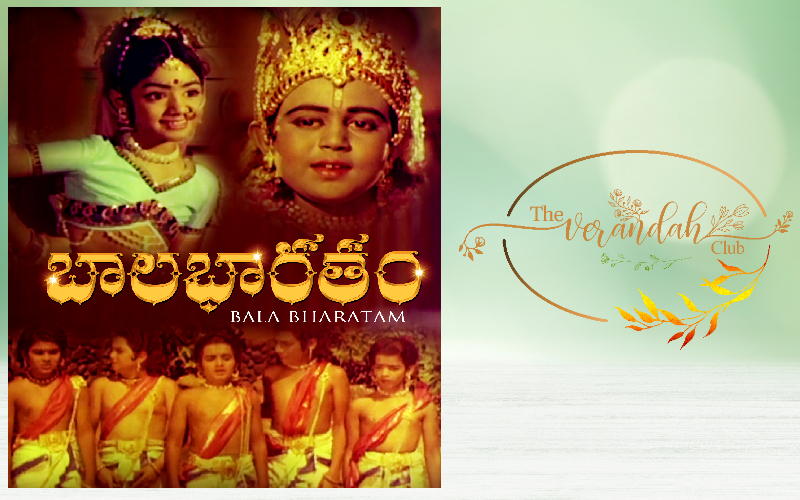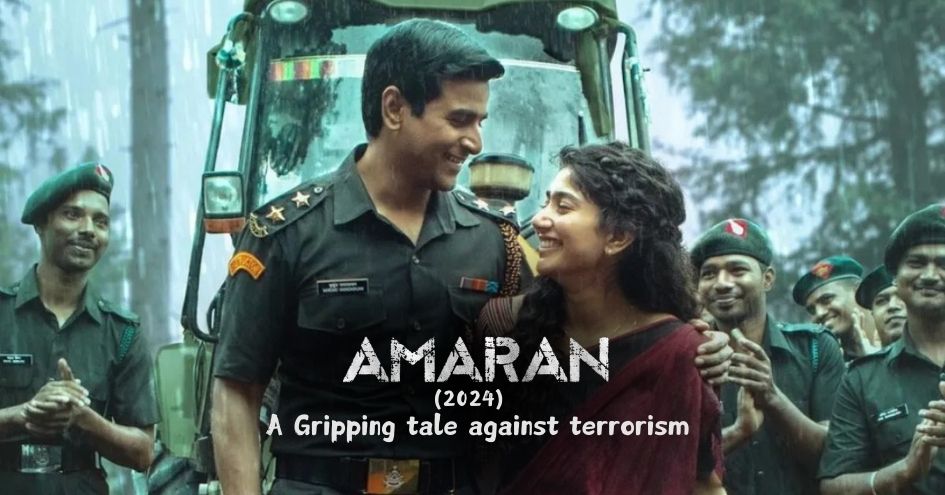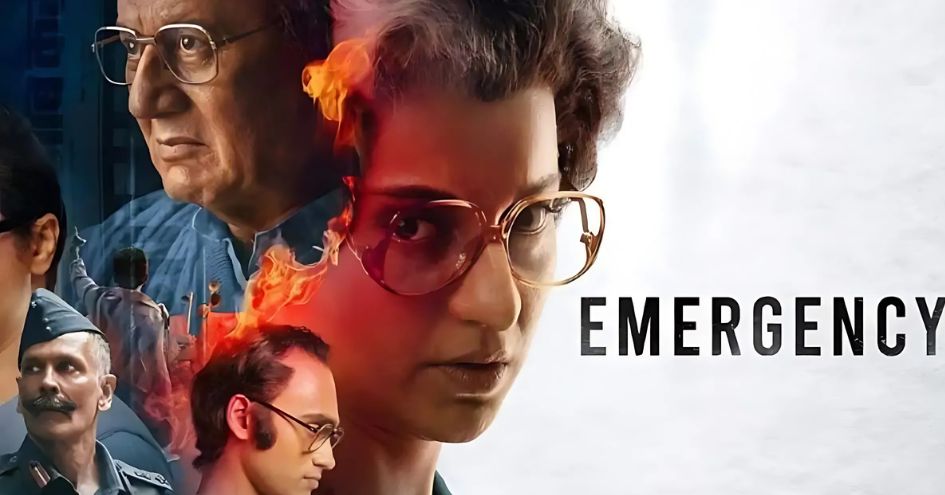
Bala Bharatam was produced in the year 1972 and most of the artists were children. The famous actress, Sridevi did a role in this movie. It was originally produced in Telugu and later dubbed into Hindi as ‘Bal Mahabharat’, into Kannada as ‘Bala Bharata’ and into Tamil as ‘Bala Bharatam’. The story was based on the younger days of the Kuru princes (The Pandavas and The Kauravas) and it was written for the movie by Samudrala. The director, Kamalakara Kameswara Rao must be accoladed, for it would have been quite a task to handle the numerous kids who were part of the cast.
The Producer happened to be Maheja Prakasa Rao and the music was rendered by Saluri Rajeshwara Rao. Veteran actor, S. V. Ranga Rao had played the role of Bheeshma and – Baby Sridevi came in as ‘Dussala’, Anjali Devi as ‘Kunti’, Kanta Rao as ‘Pandu’, Rajanala as ‘Yama Dharmaraja’, M. Balaiah as ‘Mahendra’, Haranath as ‘Narada’, S. Varalakshmi as ‘Gandhari’, Dhulipala as ‘Sakuni’, Master Prabhakar as ‘Duryodhana’, Mikkilineni as ‘Dhritarashtra’ and a host of others.
The Mahabharata is considered to be the fifth Veda and is the most popular epic in our country. Sage Veda Vyasa has delivered the happenings in 100,000 verses with Lord Ganesha as his scribe. The great actor cum artist, R. K. Laxman has immortalized the role of Ganesha as the scribe in a lovely watercolor picture.
Hastinapura was ruled by the Kuru dynasty and the wise grandsire, Bheeshma was supposed to be the ruler. However, he chose to remain unmarried in order to facilitate the smooth passage for the children of his stepmother, Satyavati. Chitrangada and Vichitravirya had been born to Shantanu and Satyavati. Chitrangda had passed away early and therefore Vichitravirya was made the ruler. Unfortunately, his wives, Ambika and Ambalika, were left childless after his early demise. A worried Queen-mother, Satyavati took her son Vyasa to Sage Parasara into confidence and requested him to sire grandchildren through her daughters-in-law, Ambika and Ambalika. Both of them gave birth to the blind, Dhritarashtra and Pandu respectively.
The laws of the land forbade a blind person from ruling the kingdom and therefore, Pandu was anointed as the king of Hastinapura. Bheeshma had acted as the regent as and when required from the times of Shantanu to the coronation of Pandu and he was known as ‘Pitamahaa’. He led the life of a bachelor and used his celibate life to enhance himself spiritually. He was the last great soul of the Dwapara yuga and Lord Krishna had recognized the greatness of Grandsire, Bheeshma. This led Krishna to suggest King Yudhishtira to seek the guidance of Bheeshma with regard to Raja Dharma. Grandsire Bheeshma, advised Yudhishtira accordingly and he rendered the ‘Vishnu Sahasra Naama’ along with his advice on Raja Dharma.
King Pandu had been cursed by Rishi Kindama and his wife, to die while in the company of his Queen. This had been the outcome of Pandu having shot at a sage and his wife while they were enjoying each other’s company as a deer couple. Therefore, Pandu gave up his kingdom and went away to the forest along with his wives, Kunti and Madri. The Pandavas were born through 5 devatas due to the special prayer that was used by Queen Kunti. Life went on but fate was strong.
One day Pandu sought a union with his wife, Madri and curse took effect. Poor Pandu passed away and Madri accompanied him to the funeral pyre. The Pandavas & Kunti were escorted back to Hastinapura and they began living with their hundred cousins – the Kauravas. Dussala happened to be the only sister for the entire Kuru clan. Grandsire Bheeshma ensured that teachers like Kripacharya and Drona took care of the multi-faceted educational needs of the Kuru princes.

Sakuni was the maternal uncle of the Kauravas. He had chosen to accompany his sister, Gandhari long ago. The intelligent but crooked Sakuni fueled distrust into the mind of his nephew and thus resulted in the enmity between the Kauravas and Pandavas. Ultimately, this led to the Mahabharata war and wanton destruction took place. The war resulted in heavy losses and none but Sakuni could be named as the person responsible for the same.
The movie Bala Bharatam talks about the early days of the rivalry between the Kuru and the Pandava princes. Duryodhana wants to be named as the heir apparent simply because he happens to be the first son of Dhritarashtra. However, Yudhishtira is eligible to be coronated because he happened to be the son of King Pandu. The movie articulates the differences of opinion during the childhood days of the 105 princes. The child artists have done a good job and it must have been quite a task to extract work out of them. Several episodes connected with the fueling of the rivalry amongst the princes forms the core of the movie.
The story of the Kauravas poisoning Prince Bheema during a feast and thereafter, throwing him into river Yamuna is one of the plots. Bheema emerges stronger after the tribulation. The song, ‘Vindhu Bhojanam’, by L. R. Eswari happens to be the highlight in this episode where Bheema is offered a grand feast by his jealous cousins. The innocent Bheema falls for this and the rest is history.
Another interesting episode talks about the 100 Kauravas making a clay elephant for their mother, Gandhari. This was used by Gandhari to perform a special pooja. The young Pandava princes want their mother Kunti to perform a similar pooja and Bheema begins the task. Arjuna creates an arrow ladder into the skies and Bheema ensures that Aiyravatha (The elephant belonging to Lord Indra) is brought to Hastinapura in order to facilitate the Gaja pooja by Queen Kunti. Plots and counterplots fill up the space and this color movie has been applauded for the same.
The huge feast given by Duryodhana for the Pandavas has been shot wonderfully. An innocent Bheema gets into an eating contest and out does everyone. Sridevi as ‘Dussala’ has done extraordinarily well, and it goes without saying that S. V. Ranga Rao as ‘Bheeshma’ has also done his best. Episodes connected with the contest between the princes and the story of Ekalavya make the film even more interesting. The viewer is bound to travel into the Mahabharata for this movie can be compared to a time machine.
The songs have been rendered well by Ghantasala, P. Susheela, and L. R. Eswari. The trick shots have been done well. The song ‘Manavude Mahaniyadu’ shows the young Bheema trying to climb the skies with the aid of the arrow ladder constructed by Arjuna looks fabulous in the movie. The fellowship and quarrels between the cousins have been portrayed very well.
Bala Bharatam conveys one point extremely well and that is about unity backed by Dharma/righteousness. The movie fits the bill in the India of today. Many of us are pursuing our independent goals and end up trampling upon the toes of others while doing so. This is bound to increase acrimony in the long run. Liberty and privacy have become the eyes of this organism called ‘Personal ambition’. This could lead to temporary success but will not create a harmonious life in the long run for the people concerned. Let us take away the short-sightedness of Duryodhana from us and stick to the magnanimity of Queen Kunti who is ably followed by the Pandavas as the clue and lead a life based on righteousness. The movie is a must watch for all the kids and it can be an eye-opener to people belonging to all age groups.
NEXT ARTICLE

Hiphop Tamizha's "Kadaisi Ulaga Por" (The Last World War), released in 2024, transcends the typical action-packed sci-fi war movie genre. It embeds a...

Creating war films is a challenging endeavor, and capturing the emotional struggles of soldiers and their families adds an even greater layer of com...

Emergency, directed by Kangana Ranaut, is a bold and gripping political drama that delves into one of Independent India’s darkest periods: the Emergen...